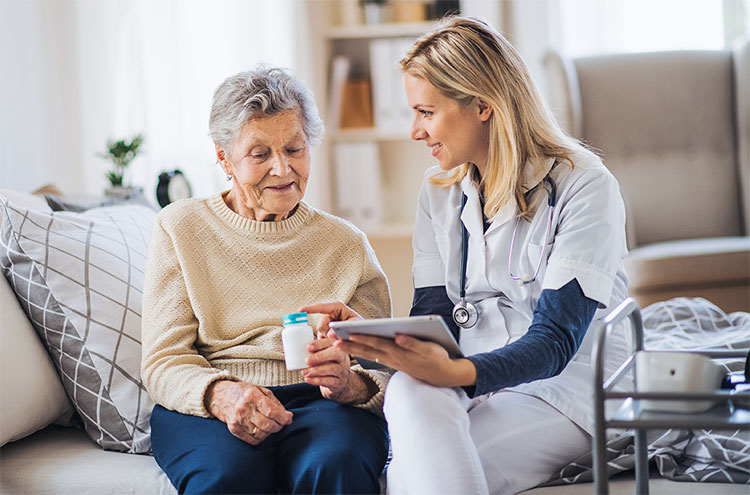Personal Care Assistance (PCA)
Personal care assistance (PCA)
Absolute Care provides assistance and support for persons with disabilities, living independently in the community. This includes the elderly and others with special health care needs. PCA services are provided in the recipient’s home or in the community when normal life activities take him or her outside the home.

Services
PCA covers these four basic categories of services:
- Activities of daily living (ADLs): Activities a person needs to carry out on a daily basis to remain healthy and safe. The covered ADLs are dressing, grooming, bathing, eating, positioning, transfers and mobility.
- Instrumental activities of daily living (IADLs): Activates a person needs to carry out on a regular basis to remain independent. Examples include shopping, paying bills and meal preparation.
- Health-related procedures and tasks: Tasks such as supporting a person with self-administered medications or help with range of motion exercises.
- Observation and redirection of behaviors: Monitoring a person’s behaviors and redirecting them to more positive behaviors when needed.
Eligible Services for Medical Assistance Payment
Four categories of personal care assistance (PCA) services are eligible for payment from Medical Assistance:
- Activities of daily living (ADLs)
- Instrumental activities of daily living (IADLs)
- Observation and redirection of behaviors
- Health-related procedures and tasks
Dressing
Including the application of clothing and special appliances or wraps.
Grooming
Including basic hair care, oral care, shaving, basic nail care, applying cosmetics and deodorant, care of eyeglasses, and hearing aids.
Bathing
Including basic personal hygiene and skincare.
Eating
Including completing the process of eating, including hand washing and application of orthotics required for eating, transfers, and feeding.
Including assistance to transfer the person from one seating or reclining area to another.
Mobility
Including assistance with ambulation, including use of a wheelchair; not including providing transportation.
Positioning
Including assistance with positioning or turning a person for necessary care and comfort.
Toileting
Including helping persons with bowel or bladder elimination and care. This includes transfers, mobility, positioning, feminine hygiene, use of toileting equipment or supplies, cleansing the perineal area, an inspection of the skin, and adjusting clothing.
Dressing
Including the application of clothing and special appliances or wraps.
Grooming
Including basic hair care, oral care, shaving, basic nail care, applying cosmetics and deodorant, care of eyeglasses, and hearing aids.
Bathing
Including basic personal hygiene and skincare.
Eating
Including completing the process of eating, including hand washing and application of orthotics required for eating, transfers, and feeding.
Transfers
Including assistance to transfer the person from one seating or reclining area to another.
Mobility
Including assistance with ambulation, including use of a wheelchair; not including providing transportation.
Positioning
Including assistance with positioning or turning a person for necessary care and comfort.
Toileting
Including helping persons with bowel or bladder elimination and care. This includes transfers, mobility, positioning, feminine hygiene, use of toileting equipment or supplies, cleansing the perineal area, an inspection of the skin, and adjusting clothing.